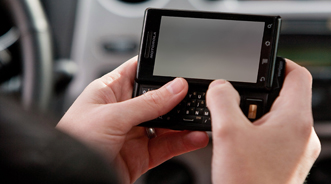Are Digital Magazines More Effective Ad Venue for Automakers?

As automakers continue to search for ways to reach customers in the digital age and entice these shoppers to action, it appears they are gaining much more traction through customers clicking on advertising apps when reading magazines on their mobile devices than through traditional magazines ads, says media research firm Affinity.
The company’s American Magazine Study indicates that 28 million Americans took a new vehicle for a test drive in the last six months.
Within that group, close to 7 million say they tap into magazine and advertising content via mobile applications on digital products, the study said. These include things like smartphones, tablets and e-readers.
The study also noted that 86 percent of Americans test-driving cars read print magazines regularly.
Despite the prevalency of print readership, Affinity’s VISTA Service — which examines how effective print and digital magazine ads are — suggested that when a consumer views an auto ad while using a mobile magazine app, the likelihood the individual will be inspired to take action because of the ad is 42 percent stronger than if the consumer had seen the ad in print.
What’s more, the likelihood that consumer reading a digital magazine will stop by the dealership is close to three times as strong, and the probability the shopper will visit the automaker’s website is close to 100-percent greater.
“When it comes to brand building, digital magazine readers report that they are 44-percent more likely to have a favorable opinion about an automotive brand after seeing the advertiser’s digital magazine campaign,” the company added.
Breaking it down further, Affinity noted: “By auto segment, full-size models lead the pack in generating in-app ad recall and prompting reader actions among digital magazine readers.”
More specifically, the average ad recall for full-size models was 65 percent, with actions taken 66 percent of the time, on average
.
Next on the list was the compact segment, which had an average ad recall of 62 percent and actions taken 64 percent of the time.
Third was the midsize segment, which generated 59 percent ad recall. Actions were taken 63 percent of the time.
Among the individual vehicles utilizing mobile magazine advertising, the Chevrolet Volt’s digital campaign was found to be the most effective this year, as its average ad recall was 79 percent with average actions taken at 88 percent.
Other models found to be highly effective were the Lexus CT Hybrid (76 percent average ad recall, actions taken 68 percent of time) and the Ford F-150 (74 percent, 70 percent).
The following is the complete data from the chart of the “Effectiveness of Specific Auto Campaigns in Digital Magazines,” as provided by VISTA Digital.
Chevrolet Volt
Average Ad Recall: 79 percent
Average Actions Taken: 88 percent.
Lexus CT Hybrid
Average Ad Recall: 76 percent
Average Actions Taken: 68 percent
Ford F-150
Average Ad Recall: 74 percent
Average Actions Taken: 70 percent
Volkswagen Jetta
Average Ad Recall: 66 percent
Average Actions Taken: 66 percent
Chevrolet Equinox
Average Ad Recall: 66 percent
Average Actions Taken: 70 percent
Acura TSX Sport Wagon
Average Ad Recall: 65 percent
Average Actions Taken: 71 percent
Volvo S60
Average Ad Recall: 65 percent
Average Actions Taken: 77 percent
Ford Focus
Average Ad Recall: 65 percent
Average Actions Taken: 66 percent
Subaru (corporate)
Average Ad Recall: 64 percent
Average Actions Taken: 63 percent
Ford Explorer
Average Ad Recall: 63 percent
Average Actions Taken: 78 percent
“The auto advertisers in the fast lane of the trend are those taking full advantage of digital magazine platforms by building interactivity into their ads,” Affinity noted. “For auto ads that feature videos of the model or offer consumers a virtual test drive, almost six out of ten digital readers recalling these ads report that they tapped on the screen to watch the advertiser-sponsored video.”
And 93 percent of that crowd of digital readers who tapped on the screen for video found the experience to be a positive one. Almost nine-tenths said watching the video helped them learn more about the vehicle. Meanwhile, 91 percent said it was “innovative” for the automaker to include the video.
Similar results were found when ads included photography.
“For auto ads featuring photo galleries and product shots of the advertised model, 62 percent of digital readers recalling an ad tapped on the screen to view the photographs, with 91 percent of those readers reporting that they enjoyed this interactive feature, 86 percent agreeing that they learned more about the model and more than eight out of ten (85 percent) perceive the advertiser as innovative for including a photo gallery in their digital campaign,” the study indicated.


